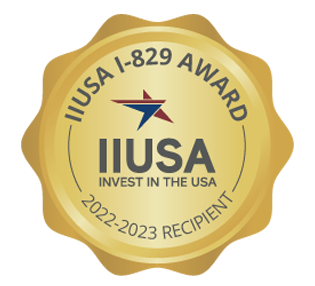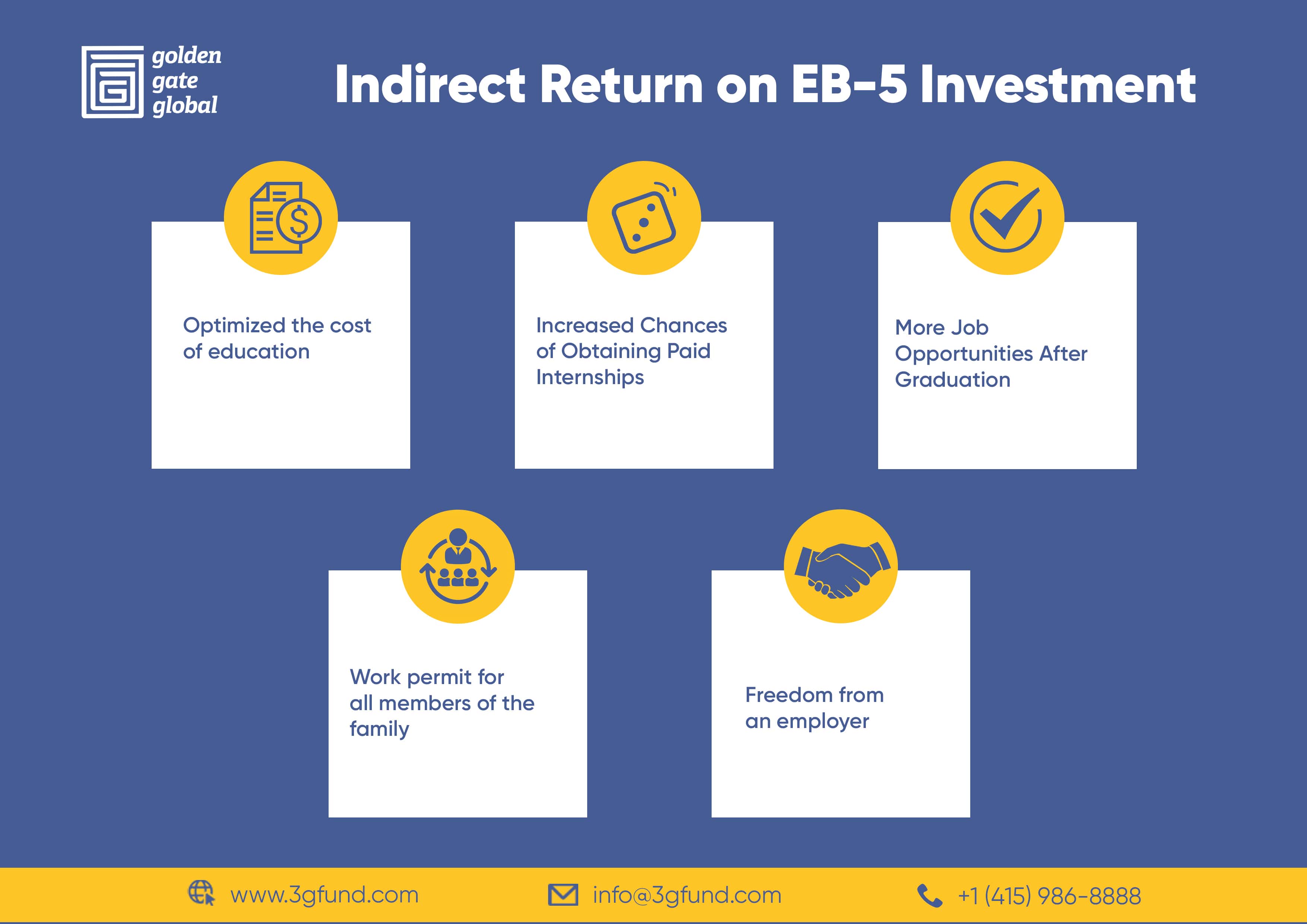Understanding the Return on Investment (ROI) of EB-5 Visa
The EB-5 visa program was established in 1990 by the US Congress to attract foreign investment and create American jobs. It is a direct and predictable pathway to US permanent residency or a green card and U.S. Citizenship. EB-5 visa could be granted to the whole investor family including:
- the investor
- their spouse
- children below the age of 21.
The program requires a minimum investment of $800,000 in targeted employment areas (TEA) and $1,050,000 for non-TEAs projects, with the creation of at least 10 new American jobs per investor.
EB-5 visa: possible Direct Return on Investment
The most common question for future investors is: What is the true return on their investment in the US with EB5 program. The purpose of the program is U.S. immigration and capital preservation. People invest in EB-5 to obtain a green card and the opportunities it provides. The reason why the standard of investment is so low, which is just the preservation of capital, is that the true return on investment for EB-5 investors is typically between 0.25% to 1%, or a maximum of 1.5%.
Factors Affecting ROI
The ROI for EB5 is low because the regional centers must offer debt to projects at a lower rate than a regular bank or financial institution would. This is the only way regional centers can attract high-quality and reliable projects. As a result, regional centers earn lower interest rates on the loans they provide to EB-5 projects, which also reduces the return on investment for EB-5 investors. However, if we look beyond just the direct ROI and consider the indirect benefits and return on investment of your EB-5 investment, it makes more sense.
Indirect ROI: Advantages of Obtaining a Green Card through the EB-5 Visa Program
The advantages of your investment depend on the stage of life you are in as an investor. Let’s review all the possible advantages of having a green card from student time up to adulthood.
Optimized the cost of education
If you or your child are a prospective student in a university in the US, obtaining a green card through the EB-5 visa program may qualify you for lower tuition fees. International students typically pay the maximum tuition to study a course in the US.
Increased Chances of Obtaining Paid Internships
Obtaining a green card through the EB-5 visa program increases the chances of students obtaining internships, which can lead to full-time jobs after graduation. International students normally face problems finding internships. The fields of study with a better chance to get an internship are STEM (science, technology, and math), but it gets harder for law schools and MBA students. Students with a green card are more likely to get an internship in any field.
International students are restricted to work in the field of their study and the work hours per week are limited. Whereas American students of legal age to work can work anywhere for as many hours as long as they can attend school. Moreover, after graduating, having a green card exposes you to a broader pool of employers, and gives you more leverage in salary negotiations.
More Job Opportunities After Graduation
Once you start working, having a green card means that you don’t have to worry about your job profile changing, which could reset your green card application. This is important for H-1B who may have to wait 20-30 years (for applicants from some regions, like China and India) to get a green card under other employment-based categories. If during that time your job profile changes because you have a promotion from senior level to a management position, then the waiting period restarts unless you hold a green card.
Work permit for all members of the family
An entire family can work with a green card, including your spouse. This is not possible if you’re on an H-1B visa, where certain conditions need to be met before your spouse can actually get employment authorization to work in the US. And if those conditions are not met, the family is forced to depend on only one paycheck, which in the US with the high cost of living is really hard. Whereas, once you have a green card, your spouse, in fact, even your children, once they attain a certain age, are able to work and make money.
Peace of mind and freedom from an employer
Many professionals who hold H-1B or L1 visas, after over 5 years of working in the US, have children, and have a family, are beginning to worry about layoffs. They are concerned that if they get laid off, they only have 60 days to find alternate employment or move to another status. Otherwise, they have to leave the US. However, a green card gives you the freedom to pursue career advancement and enjoy the benefits of living in the US without any worries.
Conclusion
The return on your investment with EB-5 program is not high and is usually around 1%. However, the indirect return on investment is high, meaning obtaining a green card through the program can offer significant additional benefits and returns. That includes a stable future and opportunities such as pursuing higher education, advancing your career, and enjoying overall peace of mind.
For a Free Consultation with an Experienced EB-5 Professional Enter your Details
The opinions expressed in this video/blog post are solely those of the presenter/author. The information provided herein is for general informational purposes only and should not be considered as professional or legal advice. The presenter/author or Golden Gate Global do not endorse or take responsibility for any actions taken based on the information presented herein. Viewers/readers are advised to seek appropriate professional advice before making any decisions or taking any actions based on the content of this video/blog post.



